[ad_1]
Instagram and Facebook (now known as Meta) may be owned by the same parent company, but the two social platforms are different—very different. For the casual user, this doesn’t matter much beyond preference. (I have to limit myself from Instagram scrolling with a 15-minute daily limit, for instance, but I haven’t logged into my personal Facebook in years and haven’t wanted to.)
But for marketers looking to grow organic reach, it’s important to understand Instagram vs. Facebook for your business goals to decide which platform works best for you and how to use each effectively.
Similar shapes, same white accent, very different vibes even with these logos.
In this overview, we’ll cover the key differences between Instagram and Facebook, including:
Let’s start with some background information.
Instagram vs Facebook: Background
People love both of these social networks: According to Hootsuite, 14.5% of active social media users report Facebook as their favorite social network, while 14.6% choose Instagram. This shouldn’t be a surprise. Both Instagram and Facebook have been cornerstone social platforms for a decade now.
But the platforms were created with different goals in mind in very different environments, and it’s a good idea to understand that before we get into the differences today. Here’s a quick overview.
| Year Founded | 2010 | 2004 |
| Founders | Kevin Systrom and Mike Krieger | Mark Zuckerberg, Eduardo Saverin, and Dustin Moskovitz |
| Founding Location | Silicon Valley, CA | Cambridge, MA |
| Tagline | Capture and share the world’s moments | Move fast together |
| Initial Medium | Mobile | Website |
These platforms were created a few years apart, but Instagram was launched after the launch and market saturation of the iPhone ushered in the mobile-first era and after Facebook’s rise to prominence changed our relationships with social media.
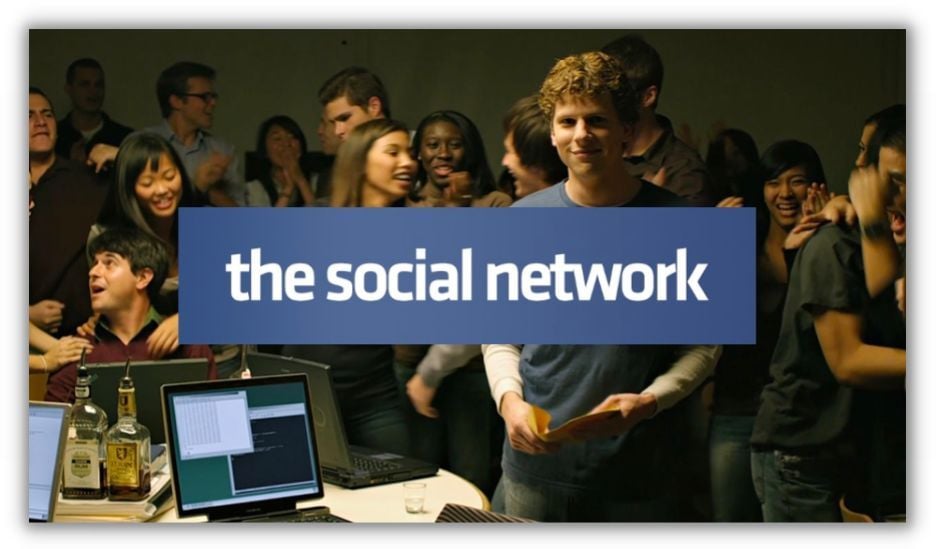
Instagram launched the same year The Social Network came out.
Now let’s get into the key Instagram vs. Facebook differences you need to know.
Instagram vs Facebook: Audiences
Both social media networks have huge audiences all over the world. Instagram and Facebook hit 1 billion users in 7.7 and 8.7 years, respectively, and they’ve continued to grow since.
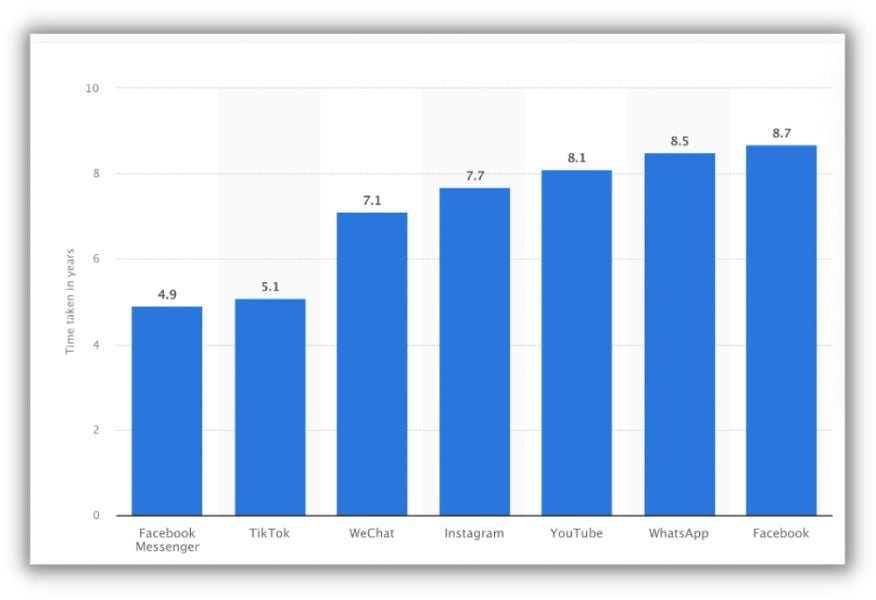
The time social networks took to reach 1 billion users, via Statista.
Still, there are some differences—including the number of users and demographics of users.
Number of users
Both Facebook and Instagram have substantial users, but Facebook’s audience is significantly bigger. Facebook has 2.9 billion monthly users, while Instagram has 2 billion monthly users.
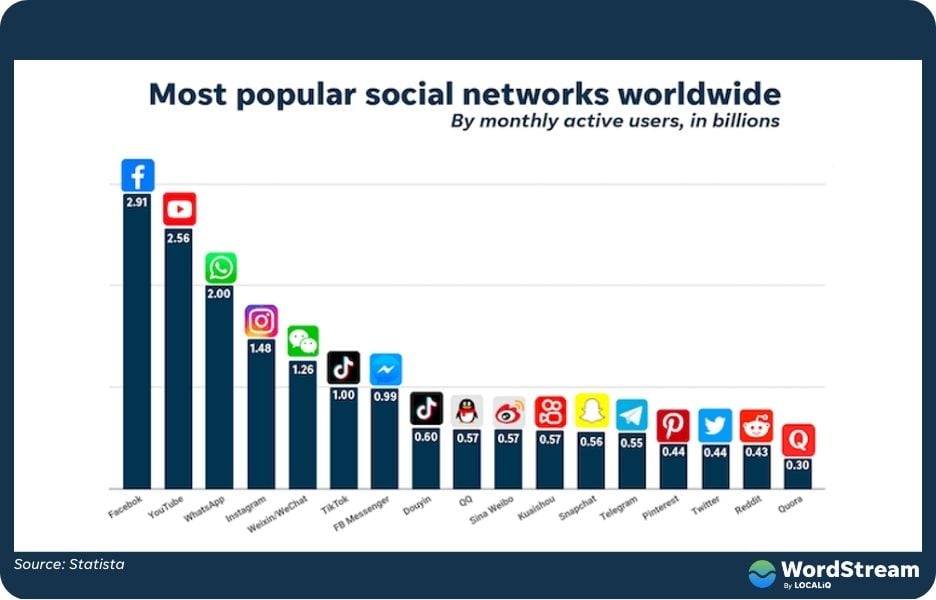
It’s important to note that Facebook’s user growth has leveled in the last five years, while Instagram has continued to grow steadily.
Age and gender identity of users
For both Facebook and Instagram, the minimum age to create a profile is 13 years old. This is important to note for marketers because it means that there are kids on both platforms.
Still, teenagers under 18 make up only about 7% of Instagram users. More than 60% of Instagram users are 18-34 years old, with women making up the slight majority for this age range.
That means if you’re targeting potential customers in their 20s and early 30s—especially women in this age range— Instagram is a great place to reach your audience.
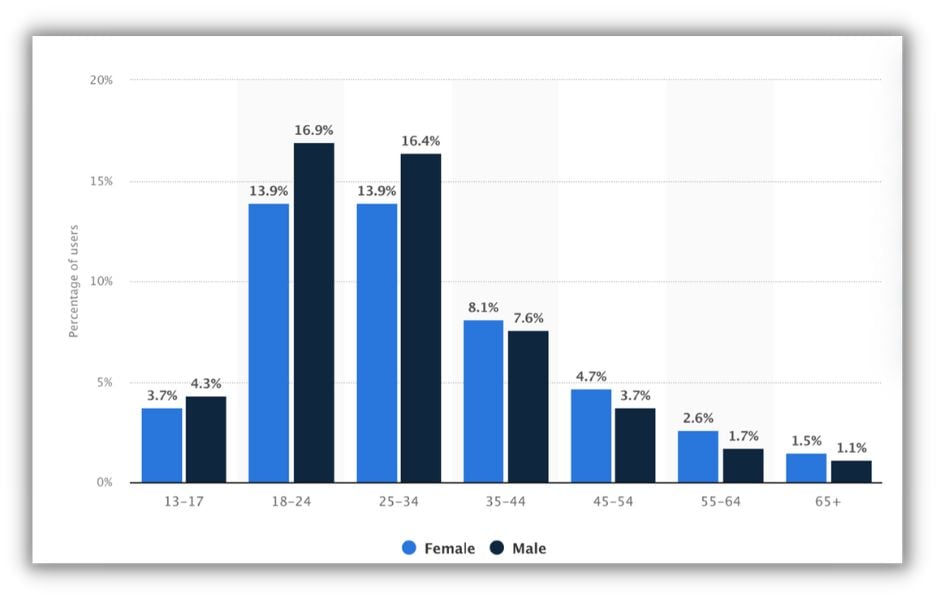
Instagram users by age via Statista
Facebook, on the other hand, skews older, with men making up the majority. Close to 50% of Facebook users are between the ages of 25 and 44. Nearly 30% of all Facebook users are men between the ages of 25 and 44.
So if you’re looking to reach men in these age groups, it’s a good idea to look into Facebook.
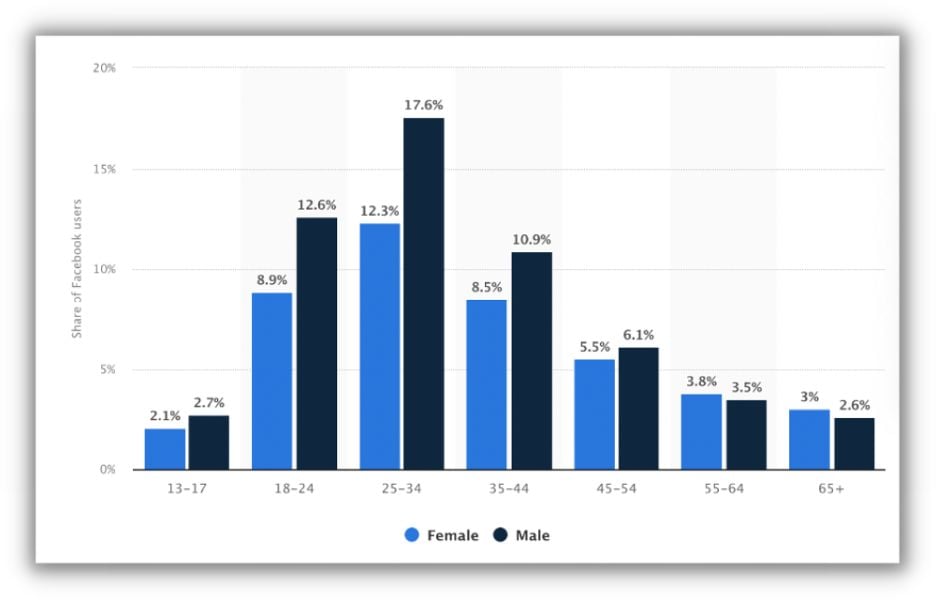
Facebook users by age via Statista
Location of users
Both social platforms are used by people globally, and their usage per country is pretty consistent. In fact, Instagram and Facebook have the same top four countries in terms of the number of users: India, Indonesia, Brazil, and the United States.
In general, you don’t need to make location-based decisions between Instagram and Facebook. But it’s a good idea to double-check the specific country or region that you’re targeting. For instance, there is some difference in social media usage between people who live in rural, suburban, and urban areas. According to PEW research, Facebook is the most commonly used social media network in rural areas, just above YouTube.
Instagram vs Facebook: Engagement
Knowing your audience and potential audience is great, but as a marketer, you know that engagement is how to determine whether or not your social media strategy is effective.
Types of engagement
The most important engagements for the Instagram algorithm are:
- Likes
- Comments
- Saves
- Profile visits
- Time spent on page
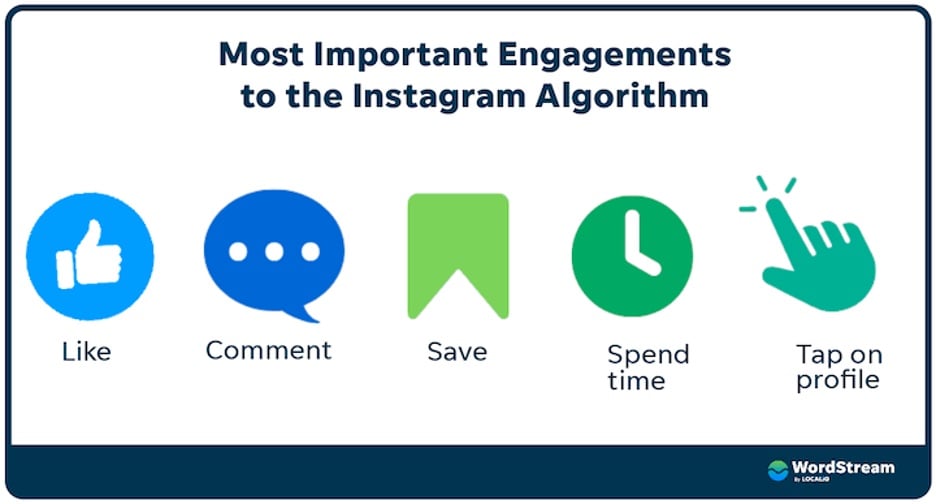
The most important engagements for the Facebook algorithm are:
- Reactions
- Comments
- Shares
- Link clicks
- Time spent on page
Engagement benchmarks
The number of engagements is useful to track and measure your organic social strategy, but it’s good to know benchmarks, too. The social scheduling and reporting platform Hootsuite analyzed social media posts to determine engagement benchmarks for organic Facebook and Instagram posts.
Here are some average engagement benchmarks for Facebook:
- Post engagement vs page fans for all post types is 0.07%.
- Photo post engagement vs page fans is 0.12%
- Video post engagement vs page fans is 0.08%.
- Link post engagement vs page fans is 0.04%.
- Status post engagement vs page fans is 0.11%.
As you can see, photo posts and status posts have the highest engagement rates. You should still test this out with your audience, but favoring those post types is a great place to start.
Here are some average engagement rate benchmarks for Instagram:
- Engagement rate for all post types is 0.54%.
- Engagement rate for photo posts is 0.46%.
- Engagement rate for video posts is 0.61%.
- Engagement rate for carousel posts is 0.62%.
Again, carousel and video posts are a great place to start whether you’re setting up an Instagram for your brand or reinvigorating an existing page.
It’s also worth noting that the average engagement rates on Instagram are higher than Facebook. This is a good reminder that it’s not always best to compare your engagements on one platform vs. the other since people use Facebook and Instagram differently.
Time spent on Instagram vs Facebook
Remember when I admitted that I have to institute a limit on how much time I spend on Instagram? I’m not the only one that finds the platform addictive: Last year, users spent an average of 11.7 hours on Instagram each month.
That’s nothing compared to Facebook, though. Users spent 19.7 hours per month on average on this platform.
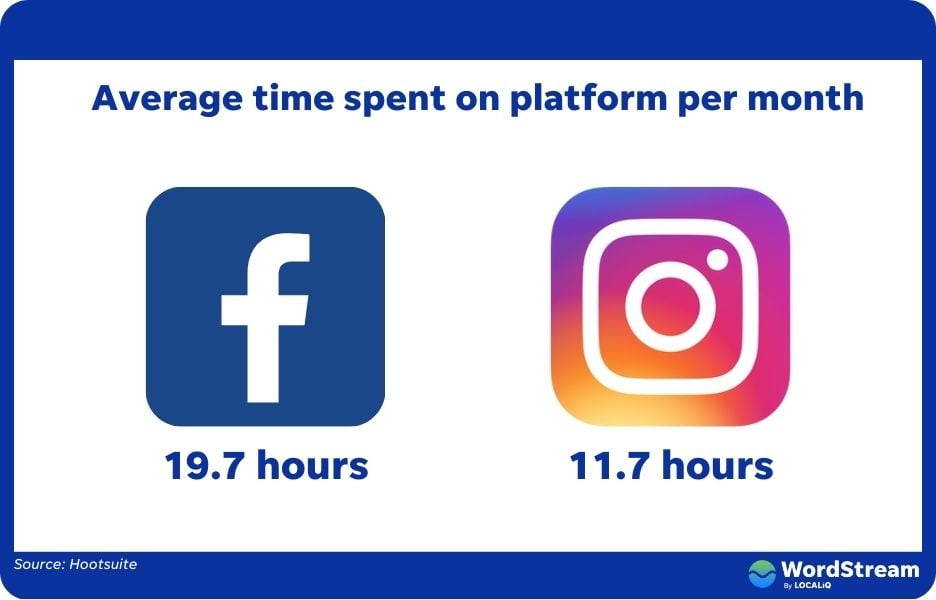
And that’s per user!
That’s a lot of opportunity for you to engage your audience—as long as you’re promoting and sharing the right content from your brand’s profile.
Instagram vs. Facebook: Content
There are many reasons to open a social media app. You could open it out of habit when you’re bored, out of curiosity when you’re looking to see what friends and family are up to, or out of necessity when you’re considering a purchase and want to see the product in action.
It’s impossible to know what your audience is looking for every single time they log into Facebook or Instagram, but you can use existing data to make some educated guesses—and some more appealing content.
Here’s what Facebook users tend to look for on the platform:
- 54% look for funny or entertaining content.
- 55% follow or research brands and products.
- 59% keep up to date with news and current events.
- 71% message friends and family.
- 64% post or share photos and videos.
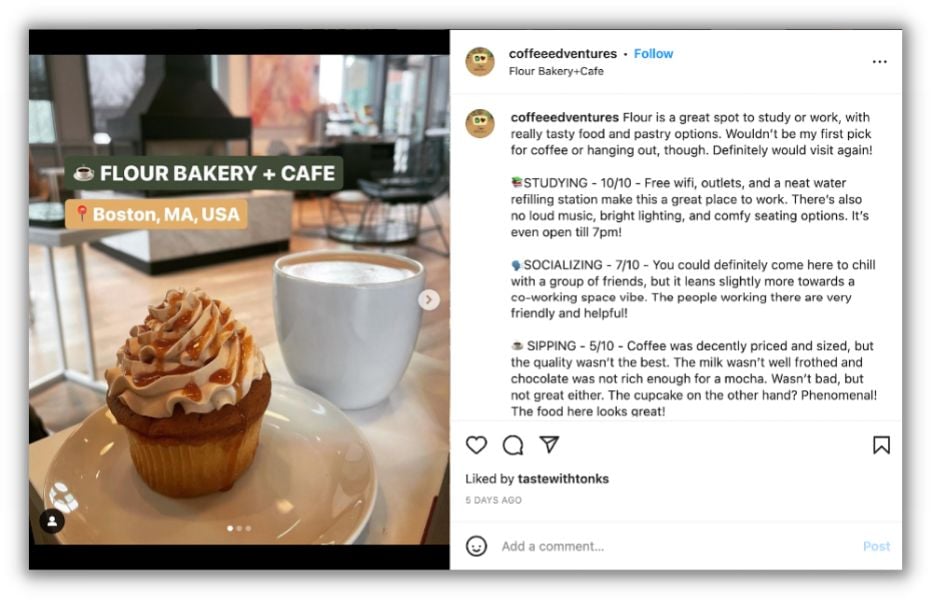
Most people go to Facebook to interact with friends and family. This means you’ll want to be sure to make your business page isn’t a distraction—avoid being too salesy there, and try instead to be conversational.
And here’s what Instagram users tend to look for on the platform:
- 61% look for funny or entertaining content.
- 62% follow or research brands and products.
- 51% keep up to date with news and current events.
- 51% message friends and family.
- 70% post or share photos and videos.
As you can see, more people are turning to Instagram to research brands and products. That’s a good signal to use this social network to highlight product reviews and customer testimonials with lots of photos and videos.
Types of content
The biggest difference between Instagram and Facebook content is that Instagram posts require a photo or a video. Facebook allows for different types of content, including text-only posts, link sharing, and more. Here’s a quick review of the content you can share on Instagram vs Facebook.
Types of content that you can share Instagram:
- Photos. Instagram posts feature photos or video content. While photos do tend to get less engagement, that doesn’t mean you want to skip them entirely. Instead, opt for carousel posts to share lots of pictures at once for better engagement.
- Stories. Instagram Stories are ephemeral video or picture posts that get lots of engagement—not in small part because they’re the first posts you see at the top of your Instagram feed. This is a great place to re-share content where customers have tagged your brand.
- Instagram Live. Instagram Live allows you to go on video and engage with your customers in real-time, which is a great way to offer Q&As or get people involved in product announcements.
- Reels. Instagram Reels are 15- or 30-second videos that can get tons of reach on Instagram. Unlike Instagram Story content, Reels live on your feed. Plus, they’re a good place to re-share TikTok content if you’re creating it.
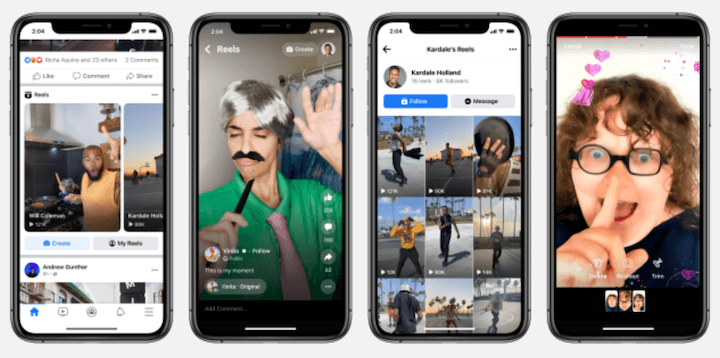
Here’s the type of content that you can share on Facebook:
- Status updates. You can use status updates to share posts with text, photos, videos, and even links to your profile feed.
- Events. You can set up Facebook events for any in-person or virtual programming that you’re running so that your followers can see and RSVP to attend.
- Live. Facebook Live is similar to Instagram Live—it offers a way to broadcast and engage your following in real time.
- Photos or videos. While Instagram is a more visual network, Facebook still allows for photos and videos. And Facebook users still want them. So be sure to share brand photos, products, and even behind-the-scenes content here.
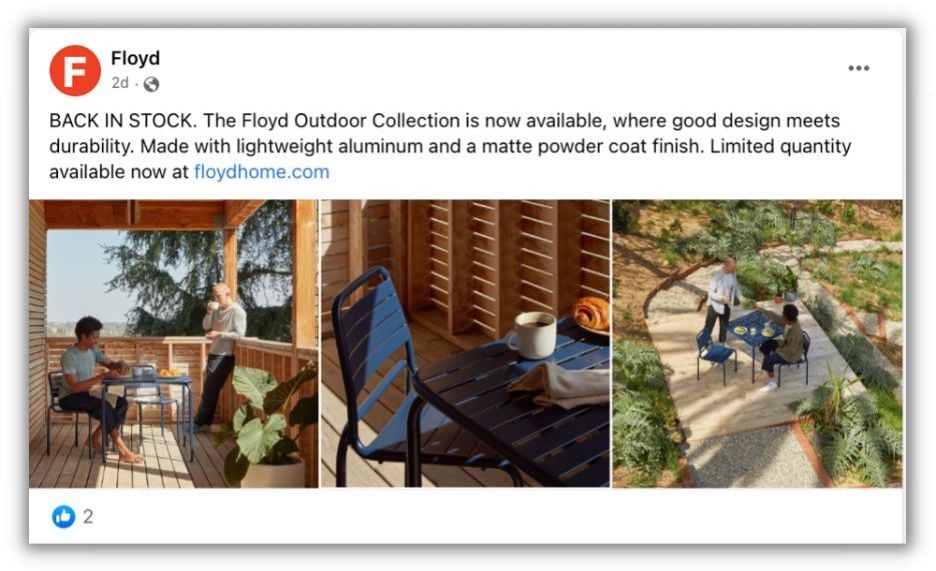
Furniture company Floyd uses Facebook status updates with photos and links to let followers know when items are back in stock.
Instagram vs Facebook: Industries
To be clear, a business in any industry can create a profile and grow a following on Instagram or on Facebook. But certain industries are better suited to one platform or the other.
Industries on Instagram
The industries that tend to perform well on Instagram are ones that easily lend themselves to the visual nature of the content, the direct connections with customers that platform enables, and the strong social media influencer market.
That includes:
- Health and beauty: Not only is the beauty industry incredibly visual, but it’s incredibly personal. In fact, Harvard Business School found that 67% of beauty shoppers look to influencers to find new products. This makes Instagram a no-brainer for growing your organic following and growing brand awareness.
- Clothing and accessory brands: Like the beauty industry, fashion relies heavily on visuals in marketing. Also, like the beauty industry, influencers play a huge role in growing fashion brands on social media. 50% of Instagram look to influencers for outfit or clothing inspiration.
- Food and restaurants: One of the reasons that the food industry does so well on Instagram is the way the platform encourages user-generated content. Food brands can let their customers speak for them—which, as we know, is always so much more effective.

Industries on Facebook
Here are a few industries where Facebook works particularly well for growing organic following and encouraging engagement:
- Real estate: Remember that the demographic of Facebook users is a bit older than Instagram and that the platform allows for visual content as well as link sharing, something that is crucial to an industry like real estate.
- Travel: Like real estate, travel is so visual and relies on links and more information than is often available in Instagram’s content formats. Hootsuite found that travel pages on Facebook earned an average of 591,000 impressions, compared to 351,000 profile visits to travel business accounts on Instagram.
- Education: Facebook is the most commonly used social media platform for educational marketing. This could be because the average age of the Facebook user is older—and so more likely to be a parent with a child enrolled in school. Either way, if you’re working for an ed-tech company or higher ed institution, it’s worth testing out with your account.

Business types on Instagram and Facebook
While any business type can grow a following on Instagram and Facebook, some are better suited to the platforms and more likely to succeed than others. Business-to-consumer brands tend to have more success growing organic social followings on any platforms, but especially Instagram and Facebook. When you consider the nature of the connection—whether it’s live videos or account-to-account communications and exchanges—this makes sense.
One business type that should definitely be on both Facebook and Instagram? Ecommerce. Instagram and Facebook both support direct sales, and they’re both incredibly effective. But more marketers report that Instagram has the highest ROI when selling products.
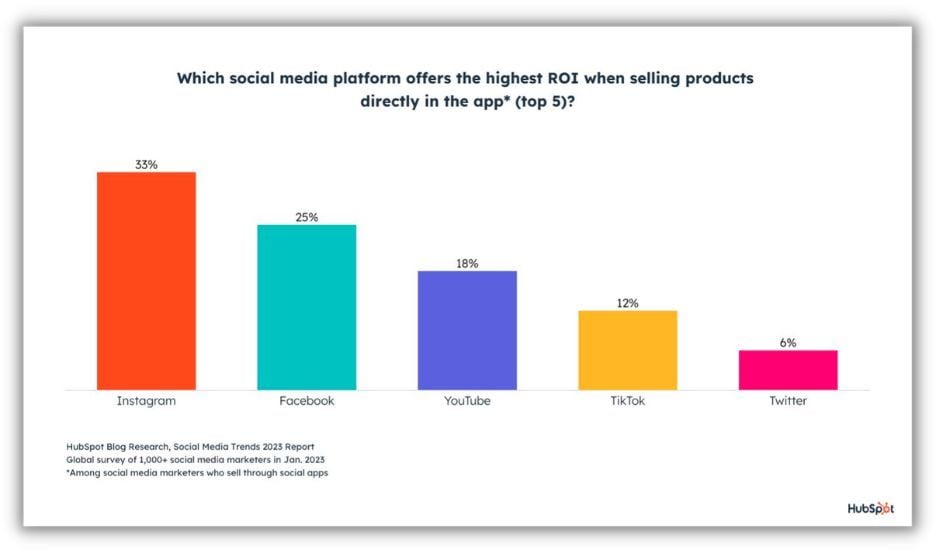
Instagram vs Facebook: Advertising
Your organic strategy for Instagram and Facebook should be independent of your advertising strategy. But it should be complementary. The more you grow and learn about your organic audience, the more you’ll be able to target your advertising if you do decide to run ads on either platform.
Here are the types of Instagram ads you can use:
- Image ads
- Instagram Story ads
- Video ads
- Carousel ads
- Collection ads
- Explore ads
- Instagram Shopping ads
- Reels ads
And here is an overview of Facebook ad types:
- Image ads
- Video ads
- Carousel
- Instant Experience
- Collection
- Facebook Lead ads
- Slideshow
- Facebook Messenger ads
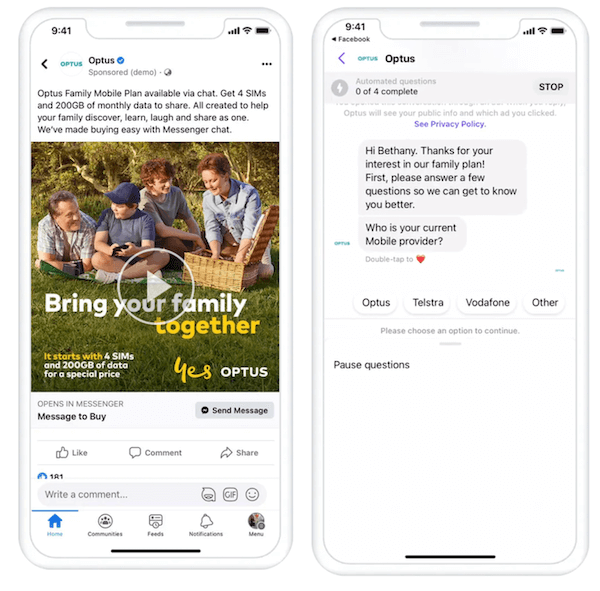
Facebook Messenger ad example
Instagram vs Facebook: You don’t have to choose
Most people are on upwards of 5 social media platforms, so if you do end up favoring Facebook over Instagram or seeing more success on one than the other, chances are you’ll still be reaching a good portion of your intended audience to some extent.
But the good news is that you don’t really need to choose. Use the differences above to determine your strategy for each platform to make sure you’re making the most of your time and your content on both Instagram and Facebook.
[ad_2]
Source link









